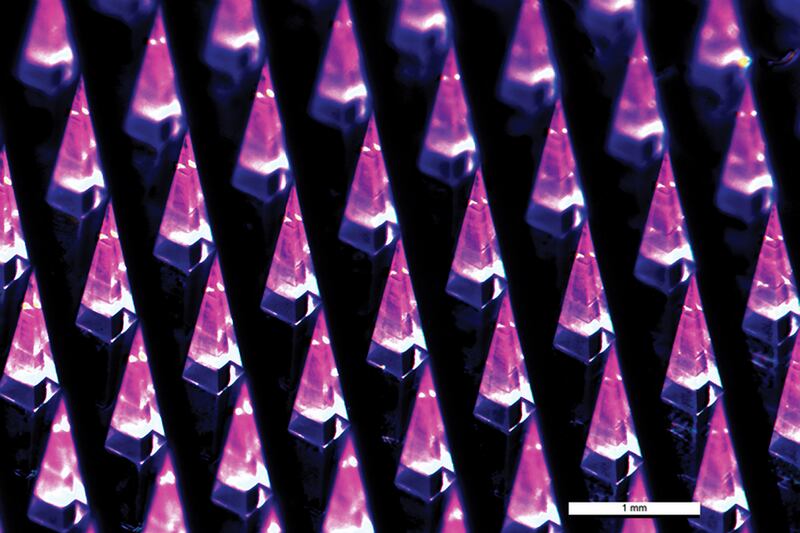A new mobile vaccine printer has the potential to provide people in hard to reach places with protection from the world's deadliest diseases.
Researchers at the Massachusetts Institute of Technology say the new technology, which creates vaccine patches with thousands of microneedles rather than bottled doses, fits on a tabletop.
Many vaccines, including some used to combat Covid-19, need to be stored in very cold conditions, making distribution difficult.
But the new printer produces vaccines that are temperature stable, eliminating the need for cold storage and therefore making vaccines more widely available.
The printer could mean much more localised vaccine production, enabling health workers to respond faster to outbreaks of disease.
“We could someday have on-demand vaccine production,” says Ana Jaklenec, a research scientist at MIT’s Koch Institute for Integrative Cancer Research.
“If, for example, there was an Ebola outbreak in a particular region, one could ship a few of these printers there and vaccinate the people in that location.”
The patches the machine produces contain hundreds of microneedles containing vaccine, which allow the liquid to dissolve in the skin.
As they do not require needle administration and can remain stable for weeks or even months, the patches and machines could help scale up vaccine provision in remote areas or those affected by sudden outbreaks.
The MIT study using mice produced thermostable Covid-19 RNA vaccines using the machine that could induce a comparable immune response to that generated by injected RNA vaccines.
The team now plans to adapt the machine to produce vaccines for other diseases, including Ebola.
While this study focused on Covid-19 RNA vaccines, the researchers plan to adapt the process to produce other types of vaccines, including vaccines made from proteins or inactivated viruses.
“The ink composition was key in stabilising mRNA vaccines, but the ink can contain various types of vaccines or even drugs, allowing for flexibility and modularity in what can be delivered using this microneedle platform,” Dr Jaklenec says.
“This work is particularly exciting as it realises the ability to produce vaccines on demand,” says Joseph DeSimone, professor of translational medicine and chemical engineering at Stanford University, who was not involved in the research.
“With the possibility of scaling up vaccine manufacturing and improved stability at higher temperatures, mobile vaccine printers can facilitate widespread access to RNA vaccines.”






